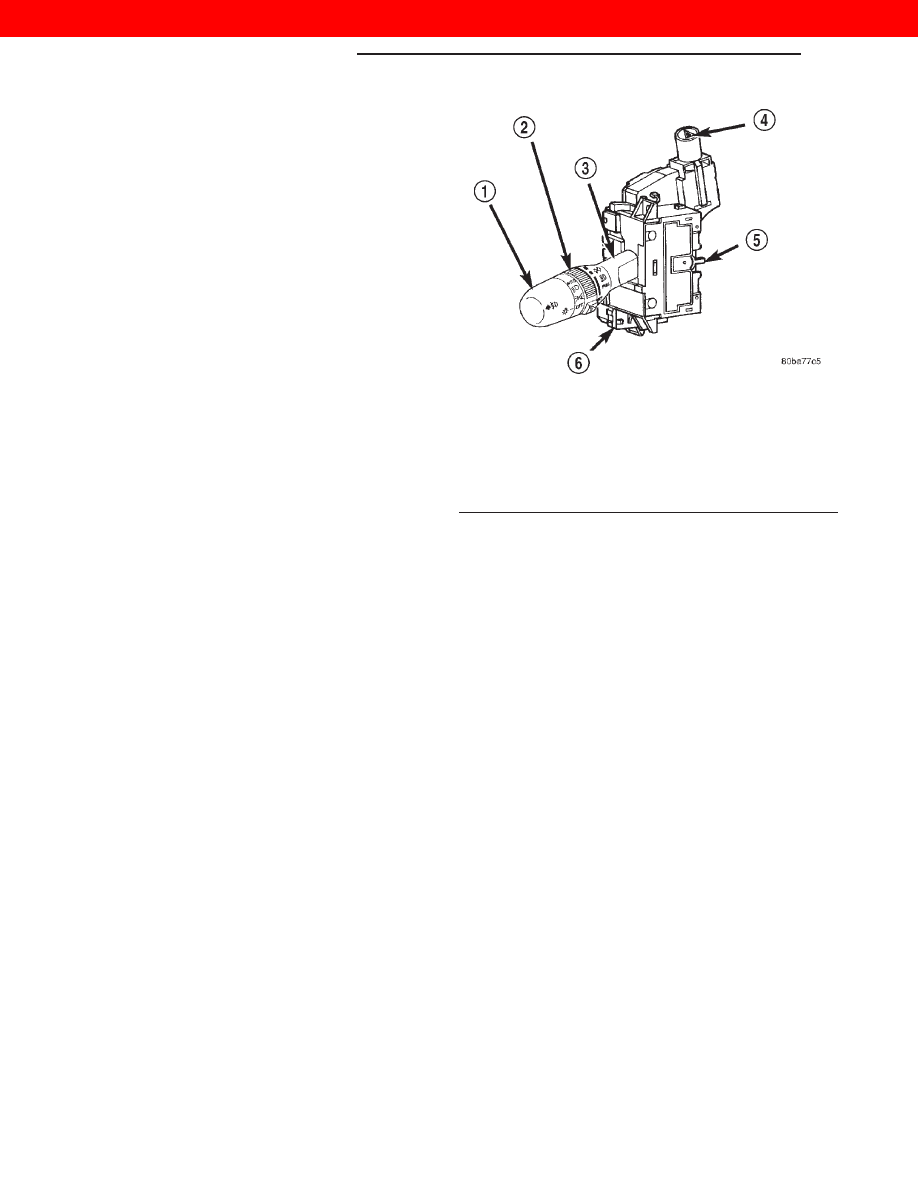Jeep Grand Cherokee WJ. Manual - part 111

(4) Verify switch operation.
(5) Push the headlamp switch straight into the
cluster bezel until retaining tabs lock it in place.
REAR FOG LAMP SWITCH
WARNING: ON VEHICLES EQUIPPED WITH AIR-
BAGS,
REFER
TO
GROUP
8M
-
PASSIVE
RESTRAINT SYSTEMS BEFORE ATTEMPTING ANY
STEERING
WHEEL,
STEERING
COLUMN,
OR
INSTRUMENT PANEL COMPONENT DIAGNOSIS OR
SERVICE. FAILURE TO TAKE THE PROPER PRE-
CAUTIONS COULD RESULT IN ACCIDENTAL AIR-
BAG DEPLOYMENT AND POSSIBLE PERSONAL
INJURY.
For the removal and installation procedure of the
rear fog lamp switch. Refer to the turn signal switch
removal and installation procedure in Group 8J,
Turn Signal and Hazard Warning Systems.
Fig. 3 Lighting Multi-Function Switch
1 – EXTERIOR LIGHTING CONTROL
2 – INTERIOR LIGHTING CONTROL
3 – CONTROL STALK
4 – HAZARD WARNING BUTTON
5 – CANCEL ACTUATOR
6 – LEFT (LIGHTING) MULTI-FUNCTION SWITCH
8E - 2
INSTRUMENT PANEL SYSTEMS
WJ
REMOVAL AND INSTALLATION (Continued)
2000 JEEP GRAND CHEROKEE